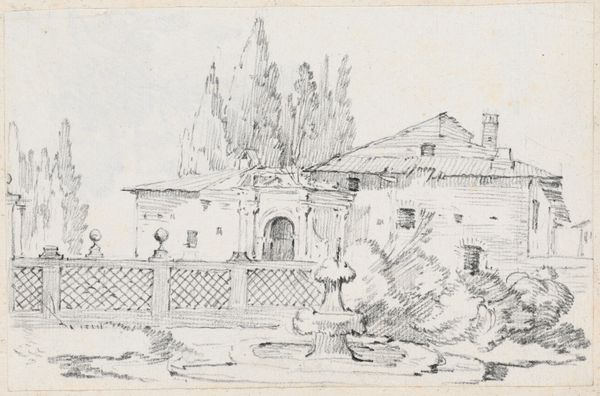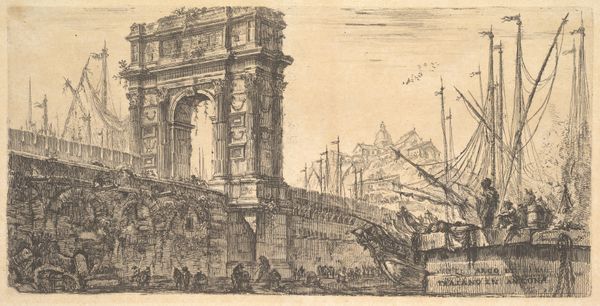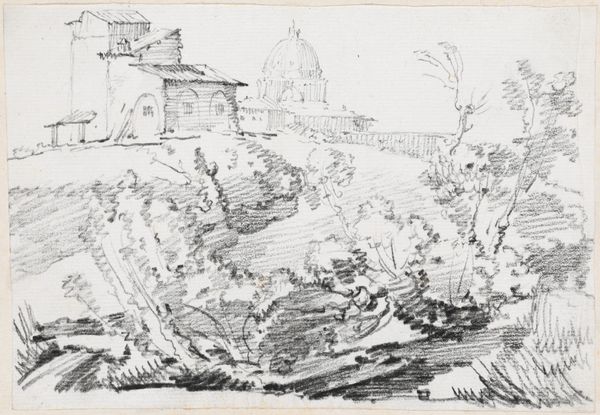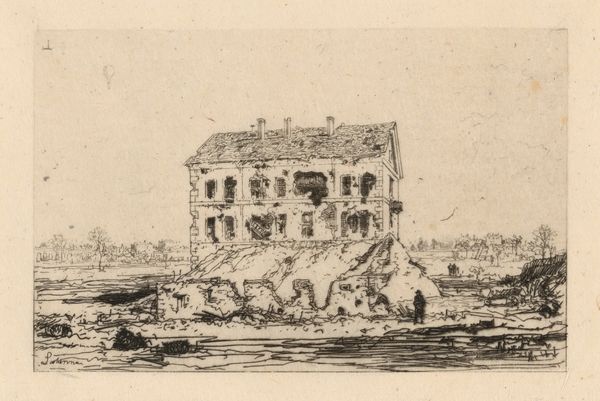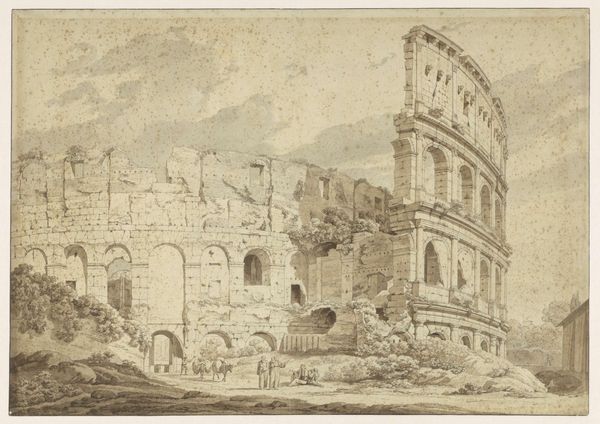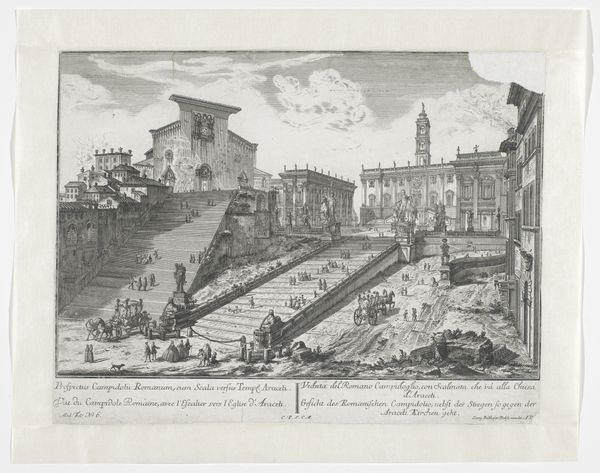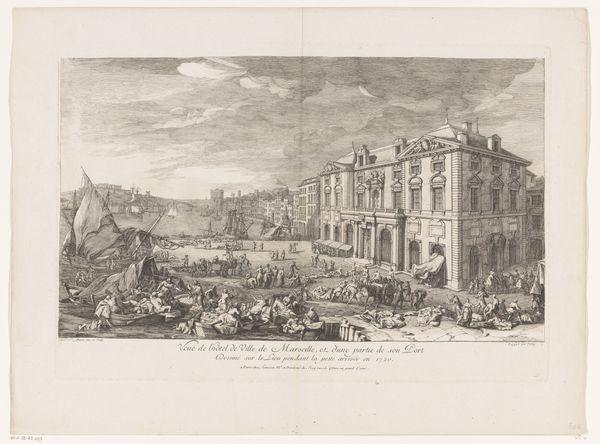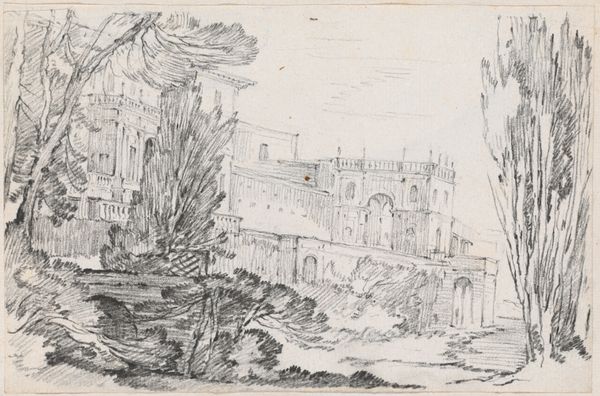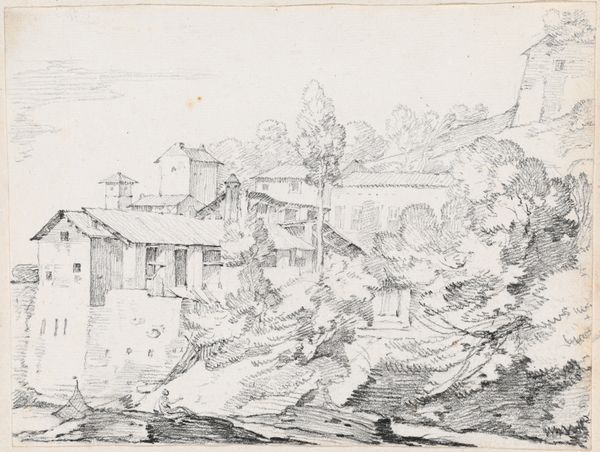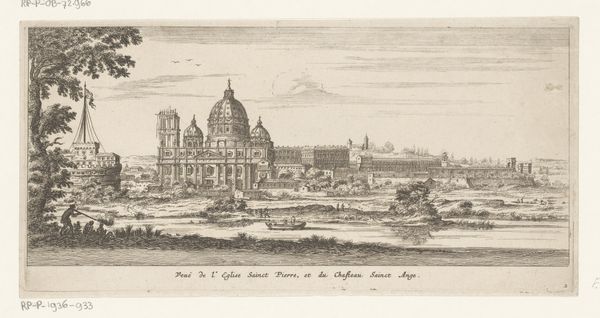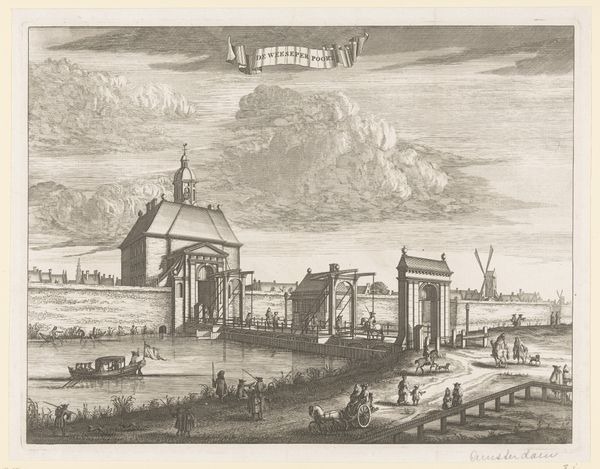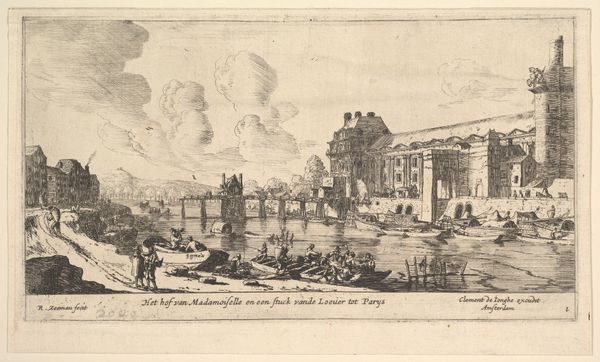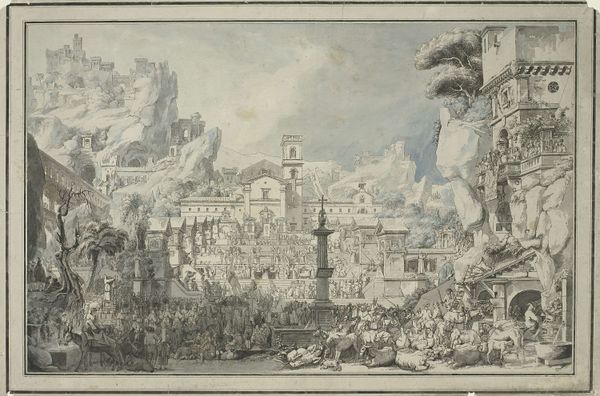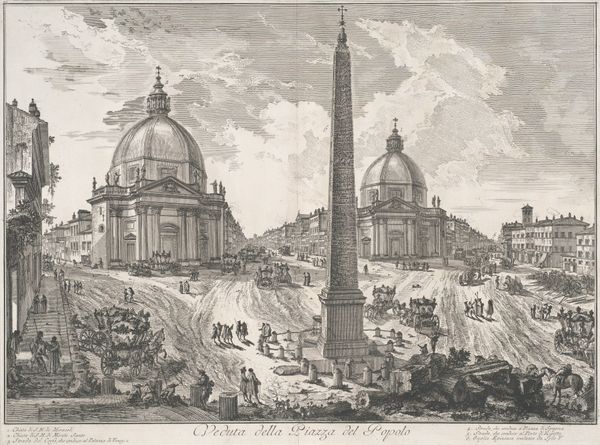
Dimensions: sheet: 12.9 x 18.5 cm (5 1/16 x 7 5/16 in.) page size: 42.5 x 27.7 cm (16 3/4 x 10 7/8 in.)
Copyright: National Gallery of Art: CC0 1.0
Editor: So, this is Joseph Marie Vien's "Saint Peter's Basilica and the Papal Palace," drawn between 1746 and 1749, using pencil and ink. It’s so delicate, almost dreamlike in its depiction of such grand architecture. How do you interpret the choice to render this iconic place with such a light touch? Curator: The “light touch” is quite deceptive. Vien, though working within Neoclassical ideals, reveals a deep interest in how power is *perceived* and *projected*. The Basilica isn't just a building; it's a symbol, loaded with centuries of papal authority and religious weight. Notice how it dominates the horizon, yet it's sketched, not sharply defined. Editor: Yes, it’s there, but… muted? Curator: Precisely. The Basilica is less a physical structure, and more an *idea* looming over the everyday. What is most fascinating here is the inclusion of those mundane foreground buildings. They root the spiritual symbol in the earthly, human realm. It asks us, how does something become sacred? Does the Basilica overshadow them, or are they the stage upon which the drama of faith unfolds? Editor: That's a fascinating point. So, the contrast makes the viewer question the Basilica’s influence, rather than simply accepting it? Curator: Indeed. Vien doesn’t just present the grandeur; he investigates its place within a broader cultural landscape. Think of the Vatican as not only an image but as a center for power – economic, political, spiritual. And the psychological weight that places on the common person…Vien suggests that this weight is far reaching. What feelings do you associate with the cupola of St. Peter's? Editor: Awe, definitely. And a bit of intimidation, honestly. Curator: There it is. The Basilica is an active symbol; it evokes certain feeling states and this pencil-and-ink sketch quietly captures that. Editor: I’ll definitely look at architectural drawings differently now. Curator: Hopefully, we can now read every image through this cultural-psychological lens and think of art as an investigation into why images still retain cultural memories and continuity through time.
Comments
No comments
Be the first to comment and join the conversation on the ultimate creative platform.
